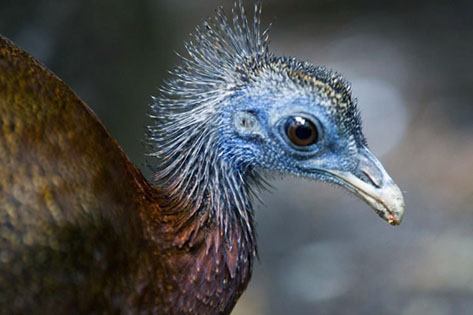One of the consequences of human-driven extinction is the distortion of biological patterns. The study of how evolution works is even more challenging if many species become extinct in humans, because the diversity we see may not be representative of how evolution came to be.
When the first humans began to colonize all regions of the world, many species became extinct. Some were directly wiped out, others saw their habitats destroyed, and many more were wiped out by the introduction of non-native predators, such as rats.
The small bird is known as the “Inaccessible Island rail” is one example. As the name implies, the island’s home is difficult to access and the train can operate safely as there are no predators.
We know that evolution can sometimes take strange paths. For example, while birds are recognized as masters of aircraft, some have abandoned this ability to live on the ground. Bird species often develop airlessness in a non-predatory environment, as the aircraft is a luxury that is not needed when there is no enemy to escape.
Today, there are over 60 species of flying birds in12 bird families – although most are penguins, rails, or ostriches and their relatives – and many are at risk of extinction. However, our recent work, which has now been published in scientific progress, has discovered that evolution towards flying thought has become much more common than the proposal of this flight 60 species, once we identify the bird species that became extinct after human arrival in a region.
The large evolutionary form in flightlessness occurred at a rate four times higher than that seen only on the basis of living species, which suggests that the evolutionary path from bird to the sky to the ground was not as rare as we previously thought. There used to be dwarf finches, owls, walnuts, hoops, and finches – sadly now all gone.
The archaeological record thus considers both living and endangered species, then extends the list of known flying birds from 60 to 226. This shows that the evolution of flightlessness in birds is in fact a widespread phenomenon, occurring in the order of at least 40 birds and evolving at least 150 times independently.
Our discoveries remind us that what we see in nature today may be very different from what existed before human influence. It shows us that anthropogenic effects can also distort the study of evolutionary patterns and obscure the frequency of large evolutionary transformations in the shape of life.
Ferran Sayol, Mary Curie Postdoc Fellow, Center for Biodiversity and Environmental Research, UCL and Tim Blackburn, Professor of Aggressive Biology, UCL This article has been republished from the conversation under the Creative Commons license. Read the original article.













